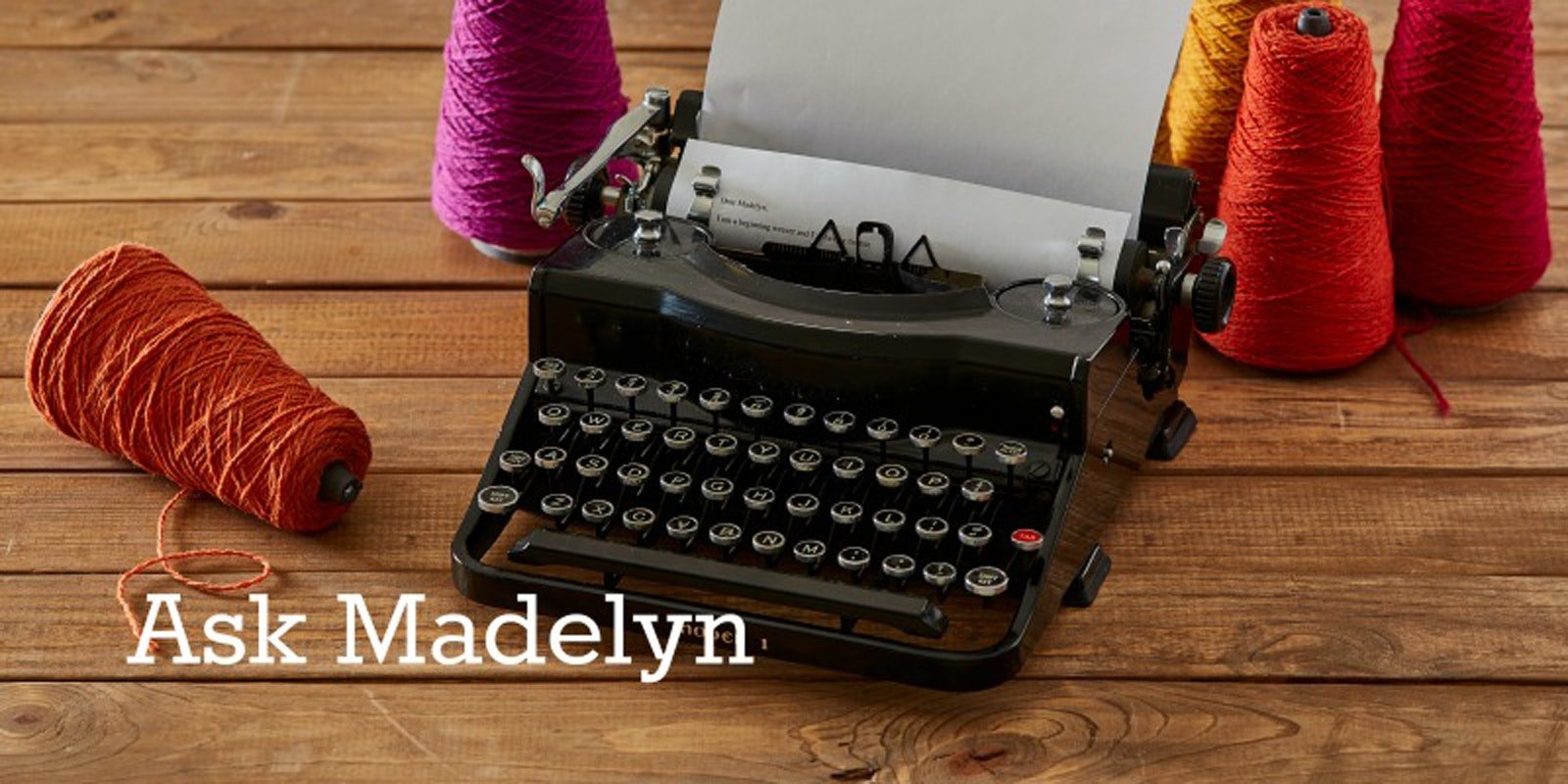Hi Madelyn,
We are a small group of weavers in a country town who help each other to enjoy weaving. Our group recently entered the local district show--with reasonable results, but the judge was critical of some things. One of course was edges--but how do you overcome a wobbly edge if the pattern actually produces it--or a loopy thread where the woven strip is spaced 1" from the next woven strip? And how should the ends of cloth yardage, intended for clothing, be finished? What does a judge look for? We would really appreciate help as we think about projects for next year's show.
—June
Hi June!
Your question is a good one, and one, I’m afraid, for which there are no perfect answers. For many shows in which weaving is included, the juror is not a weaver. That means that he/she doesn’t really know what the parameters are. They might notice unsightly selvedges (if they are emphasizing craftsmanship)--or they might think ripply selvedges are artistic (if they are focusing on “creativity”). There is no way to predict beforehand a juror’s experience or predilections. Most jurors who are not weavers wouldn’t recognize a creative use of a traditional weave from a common use, so if they are asked to judge for “originality,” they wouldn’t really know what is original. I once viewed a show where the judge gave the first prize (for originality and craftsmanship) to a piece that someone wove at my school on one of my already threaded looms following my instructions.
Since there is no way of knowing the experience or potential biases of a judge, what you need to do is look at every piece from a number of perspectives. If I were presenting yardage, for example, I would do something that made the raw edges look lovely, even if it were an attractive zigzag stitch or even hemstitching. If a piece has ripply selvedges, they should shout that they are an essential part of the design. Every aspect should look carefully done.
Weavers are not very good at criticizing each other’s work. If you show something to your guild at a meeting, and you say: "Well, there is one mistake right here (pointing to it) and I don’t think the yellow worked very well,” they’ll all tell you that no one would ever notice the mistake and that the yellow is wonderful. A very productive step for most guilds would be to find some way of incorporating constructive criticism into preparation for shows. The point of entering a show is not just to win but to use the show as motivation to stretch yourself to weave better pieces. Just weaving for a show makes you think more about how every aspect of a piece contributes to its success and beauty. I wonder if it would be good even to set up guild study groups for Show Entry weaving. You could assign a certain number of pieces a year with due dates. Members would bring their pieces on those due dates and then the group would truly critique them. I’m not sure we are capable of doing that as weavers, since our overriding goal is encouragement, but handled well this could be very helpful. You could also discuss what the pieces might look like from the perspective of someone who knew very little about weaving.
In your case, it sounds like the judge knew very little. There may have been nothing wrong with your pieces, but that is the way judging sometimes goes. The same pieces might have been loved by some other juror.
—Madelyn

